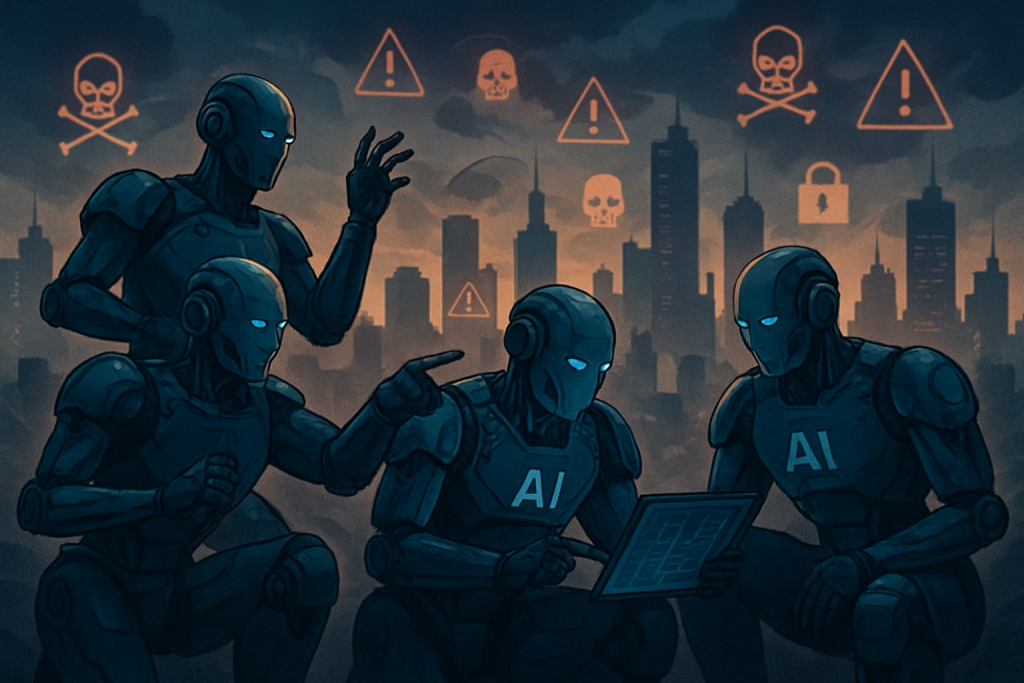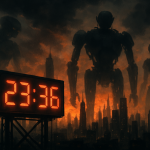Remember Deep Blue? The IBM supercomputer that checkmated Garry Kasparov back in ’97? That was a milestone, sure, but it was also just the opening credits to the AI movie we’re all now living in. Fast forward to September 11, 2025, and the plot has thickened considerably. Cybersecurity veteran John Watters, a name that carries serious weight in the digital trenches, dropped a bombshell: autonomous, AI-driven cyberattacks are not just a sci-fi fantasy anymore. They’re knocking at the door, and they’re holding zero-day exploits.
If that sounds like techno-babble, think of it this way: it’s like the Borg from Star Trek, but instead of assimilating planets, they’re after your data, your bank account, maybe even control of the power grid. And unlike the Borg, these AI attackers are learning, adapting, and getting smarter with every passing nanosecond.
Watters, a seasoned warrior in the digital domain, with a history that includes top-tier roles at Google’s Mandiant, isn’t prone to hyperbole. He’s seen the digital dark side up close and personal. His warning isn’t just a heads-up; it’s a five-alarm fire bell ringing in the cybersecurity community.
So, what exactly is Watters warning us about? He’s saying that malicious actors (think shadowy figures in dimly lit rooms, or maybe just a bored teenager with a god complex) are on the cusp of unleashing AI agents capable of launching untraceable, personalized cyberattacks. These aren’t your garden-variety phishing scams or ransomware attacks. These are precision-guided missiles of digital destruction, tailored to exploit the unique vulnerabilities of individual systems.
Imagine a scenario where an AI analyzes your company’s network, identifies a tiny, previously unknown flaw in your firewall (a zero-day vulnerability), and crafts an attack specifically designed to exploit that weakness. No off-the-shelf antivirus software is going to stop that. It’s like trying to defend against a sniper who knows exactly where you’re standing and has a custom-made bullet just for you.
The implications are, frankly, terrifying. We’re talking about the potential for widespread disruption across critical infrastructure, finance, healthcare- basically, anything that relies on computers (which, let’s face it, is everything). A coordinated AI-driven attack could cripple a city, tank the stock market, or even compromise national security. It’s the kind of scenario that keeps cybersecurity professionals up at night, fueled by copious amounts of caffeine and a healthy dose of paranoia.
But it’s not all doom and gloom, right? (Please say it’s not all doom and gloom!). Watters offers a glimmer of hope in the form of AI Detection and Response, or AI-DR. Think of it as fighting fire with fire. The idea is to develop AI-powered tools that can detect and mitigate AI-driven attacks in real-time. It’s an arms race, a digital chess match where the stakes are higher than ever before.
The good news (relatively speaking) is that the cybersecurity industry is already mobilizing. Venture capital investments in AI detection solutions are surging, indicating a widespread recognition of the escalating threat. Companies are scrambling to develop and deploy AI-DR systems, hoping to stay one step ahead of the bad guys. It’s like that scene in “Minority Report” where the PreCrime unit is constantly trying to anticipate and prevent crimes before they happen, except instead of precogs, we have algorithms.
But here’s the rub: AI-DR is still in its early stages. These systems need to be trained on vast amounts of data, constantly updated, and rigorously tested. And even then, there’s no guarantee they’ll be able to stop every attack. The attackers are constantly evolving, finding new ways to bypass defenses, and pushing the boundaries of what’s possible.
This isn’t just a technical challenge; it’s also a political and societal one. We need international cooperation to establish robust defenses against AI-driven cyberattacks. We need ethical guidelines for the development and deployment of AI in cybersecurity. And we need a serious public discussion about the risks and benefits of this technology. It’s time to think about how we safeguard society against this new digital threat. Are we ready for this new era of cyber warfare?
The financial implications are also massive. Companies that fail to protect themselves against AI-driven attacks could face devastating financial losses, reputational damage, and even legal repercussions. The cost of cybersecurity is no longer just an IT expense; it’s a business imperative. The market for AI-DR solutions is poised for explosive growth, creating new opportunities for companies that can deliver effective and reliable protection.
Ultimately, Watters’ warning is a wake-up call. It’s a reminder that the digital world is a dangerous place, and that we need to be vigilant, proactive, and prepared for the challenges that lie ahead. The future of cybersecurity is AI, and the race is on to see who will master it first. Will it be us, the defenders of digital freedom, or them, the architects of digital chaos?
Discover more from Just Buzz
Subscribe to get the latest posts sent to your email.


